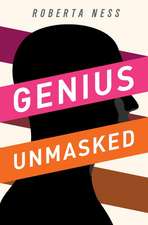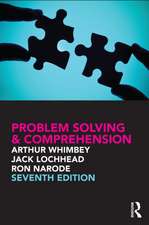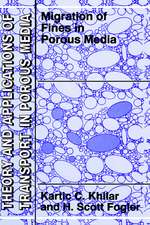Strategies for Creative Problem Solving
Autor H. Scott Fogler, Steven E. LeBlanc, Benjamin Rizzoen Limba Engleză Paperback – 7 oct 2013
Preț: 396.87 lei
Nou
75.96€ • 82.54$ • 63.85£
Carte disponibilă
Livrare economică 31 martie-14 aprilie
Livrare express 14-20 martie pentru 43.65 lei
Specificații
ISBN-10: 013309166X
Pagini: 343
Dimensiuni: 201 x 251 x 25 mm
Greutate: 0.74 kg
Ediția:3rd edition.
Editura: Prentice Hall
Notă biografică
Cuprins
Preface xiii Acknowledgments xix About the Authors xxi
Chapter 1: Problem-Solving Strategies: Why Bother? 1 What's the Real Problem? 1 Correct Problem Definition/Wrong Solution 7 A Heuristic for Successful Problem Solving 8 Summary 11 Web-Site Material 11 References 13 Exercises 13 Further Reading 15
Chapter 2: The Characteristics, Attitudes, and Environment Necessary for Effective Problem Solving 17 Getting in the Right Frame of Mind 18 Having a Vision 22 Working Together in Teams 26 Responding to Criticism 30 Conflict Resolution 32 Summary 34 Web-Site Material 35 References 37 Exercises 37 Further Reading 40
Chapter 3: Skills Necessary for Effective Problem Solving 41 Critical Thinking 41 Summary 63 Web-Site Material 64 References 65 Exercises 65 Further Reading 73
Chapter 4: First Steps 75 The First Four Steps 76 Summary 90 Web-Site Material 90 Reference 91 Exercises 91
Chapter 5: Problem Definition 93 Defining the Real Problem: Four Techniques 93 Technique 1: Using the Duncker Diagram to Define the Real Problem 94 Technique 2: Using the Statement-Restatement Technique 98 Technique 3: Kepner-Tregoe Problem Analysis 103 Which Technique to Choose? 109 Determine Whether the Problem should be Solved 109 Brainstorm Potential Causes and Solution Alternatives 111 Summary 111 Web-Site Material 112 References 113 Exercises 113 Further Reading 125
Chapter 6: Breaking Down the Barriers to Generating Ideas 127 Recognizing Mental Blocks 129 Improving Your Creative Abilities 133 Risk Taking 135 Summary 141 Web-Site Material 142 References 142 Exercises 143 Further Reading 145
Chapter 7: Generating Solutions 147 Brainstorming 147 Free Association 148 Vertical Thinking 149 Lateral Thinking 154 Organizing Brainstorming Ideas: The Fishbone Diagram 157 Cautions 159 Brainwriting 159 Futuring 159 Cross-Fertilization 162 Analogy 165 Incubating Ideas 167 Triz 168 Use The Defect to Solve The Problem 177 Summary 179 Web-Site Material 179 References 180 Exercises 181 Further Reading 185
Chapter 8: Deciding the Course of Action 187 K.T. Situation Appraisal 188 K.T. Problem Analysis 194 K.T. Decision Analysis 194 Adverse Consequences of the Alternative Solutions 198 K.T. Potential Problem Analysis 208 Summary 214 Web-Site Material 215 References 215 Exercises 215 Further Reading 227
Chapter 9: Implementing the Solution 229 Approval 229 Carry Through 241 Follow Up 242 Goal Setting 244 Summary 244 Web-Site Material 245 References 246 Exercises 246 Further Reading 247
Chapter 10: Evaluation 249 General Guidelines 249 Ethical Evaluation 253 Safety Considerations 260 Summary 260 Web-Site Material 261 References 261 Exercises 261 Further Reading 270
Chapter 11: Troubleshooting 271 Some General Guidelines 271 Technical Troubleshooting Exercises 280 Interactive Computing Module on Troubleshooting 292 Troubleshooting Laboratory Equipment 294 Summary 295 Web-Site Materia


















